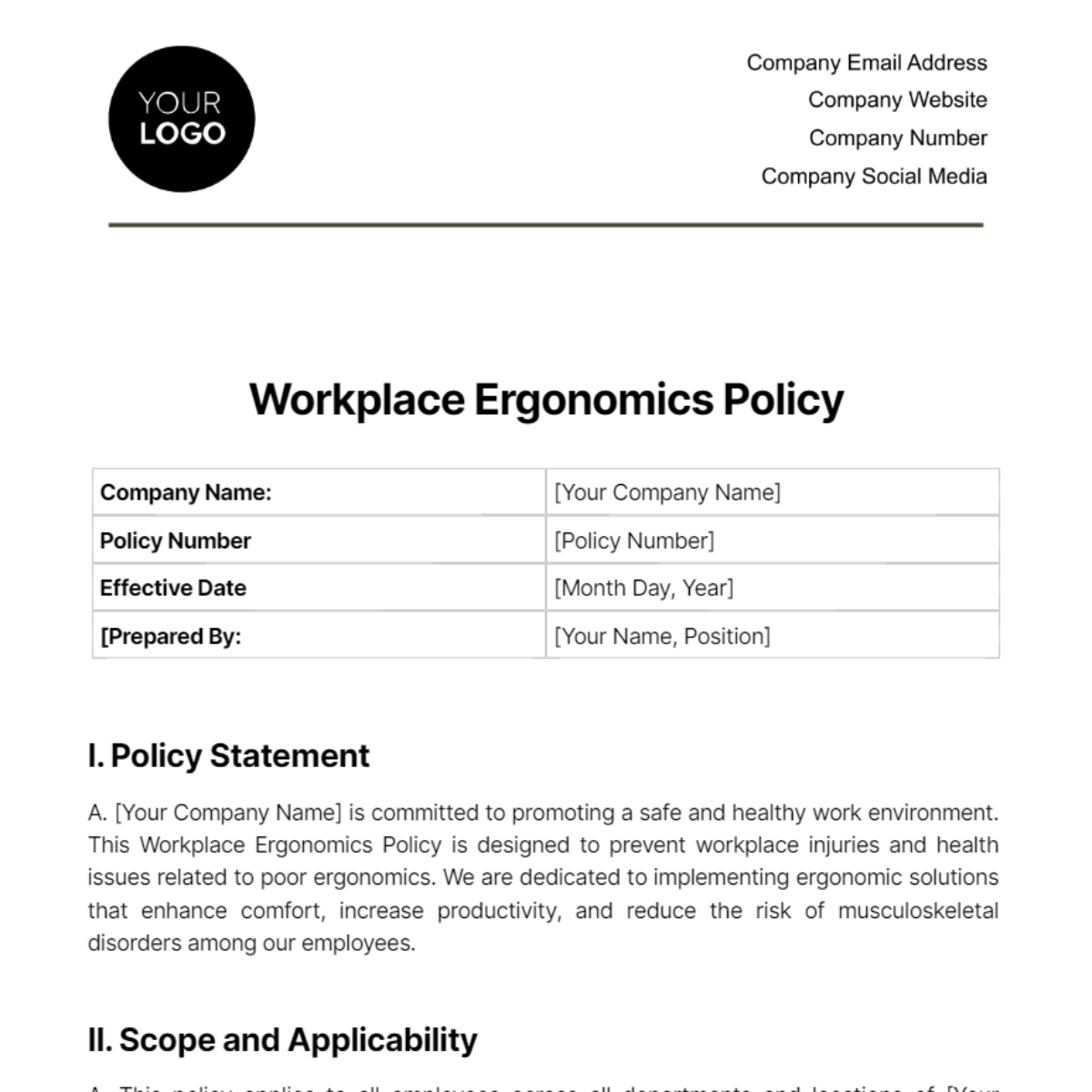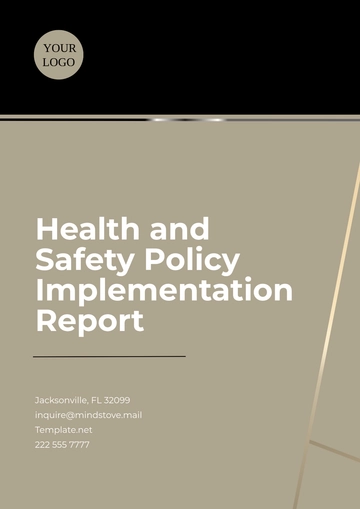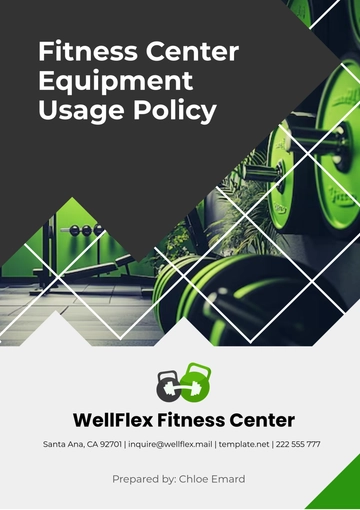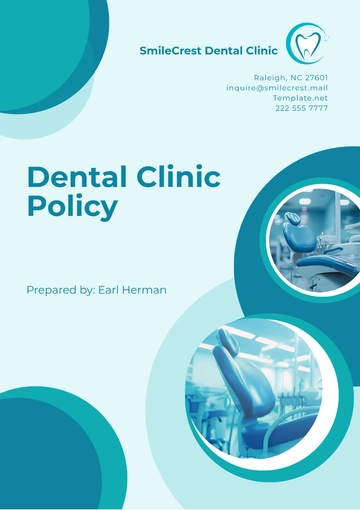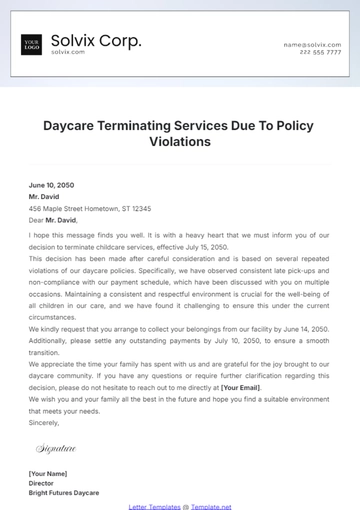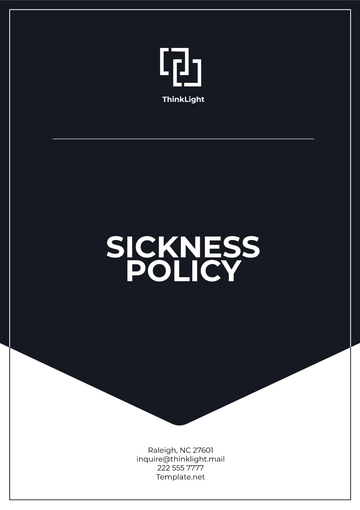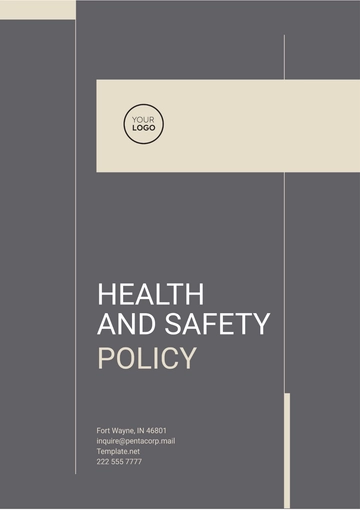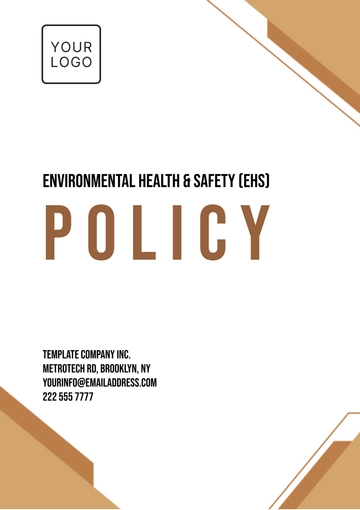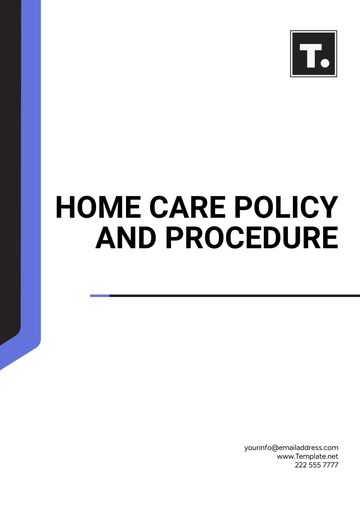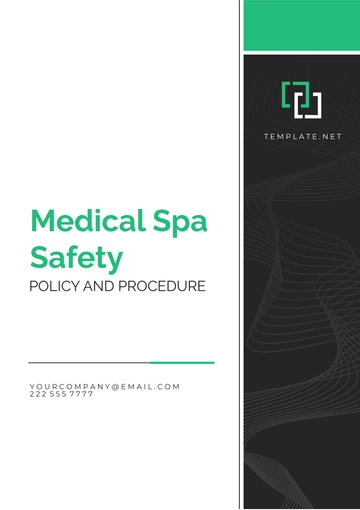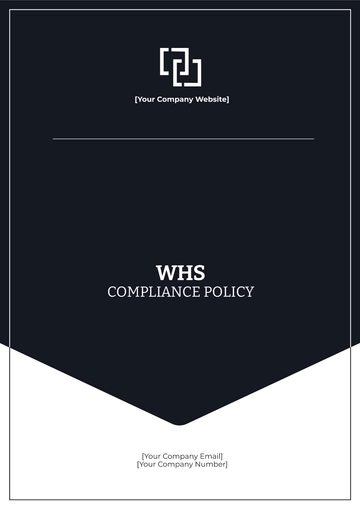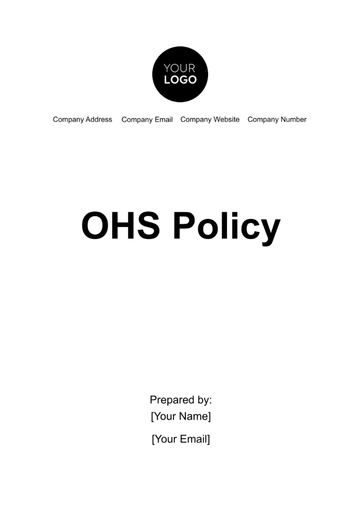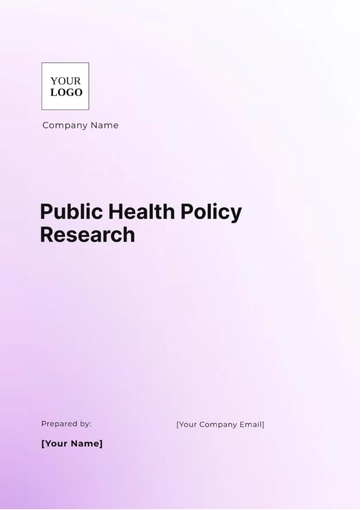Workplace Ergonomics Policy
Company Name: | [Your Company Name] |
Policy Number | [Policy Number] |
Effective Date | [Month Day, Year] |
[Prepared By: | [Your Name, Position] |
I. Policy Statement
A. [Your Company Name] is committed to promoting a safe and healthy work environment. This Workplace Ergonomics Policy is designed to prevent workplace injuries and health issues related to poor ergonomics. We are dedicated to implementing ergonomic solutions that enhance comfort, increase productivity, and reduce the risk of musculoskeletal disorders among our employees.
II. Scope and Applicability
A. This policy applies to all employees across all departments and locations of [Your Company Name], including remote workers.
B. It encompasses all aspects of the physical work environment, from workstation design to manual handling tasks, and the use of all types of work-related equipment.
III. Principles of Ergonomics
A. We adhere to the latest ergonomic standards, ensuring that all workstations and tasks are designed to minimize the risk of injury and strain. This includes adjustable furniture, proper lighting, and task design to reduce repetitive movements.
B. We commit to a process of continuous improvement, regularly assessing our ergonomic practices and making necessary adjustments based on employee feedback and new research in the field.
IV. Responsibilities
A. Management is responsible for providing the necessary resources to implement this policy, ensuring all work environments comply with ergonomic standards, and addressing any reported ergonomic issues promptly.
B. Employees are required to follow ergonomic guidelines, participate in ergonomic assessments, and report any ergonomic concerns to their supervisor or the health and safety department.
V. Ergonomic Risk Assessment and Control
A. Ergonomic risk assessments will be conducted annually, or when new workstations are set up, or new equipment is introduced. These assessments will be carried out by trained health and safety personnel.
B. Following risk assessments, appropriate control measures, such as workstation adjustments, provision of ergonomic tools, or changes in work practices, will be implemented to mitigate identified risks.
VI. Training and Education
A. All employees will receive training on ergonomic best practices relevant to their specific roles, including correct workstation setup and safe manual handling techniques.
B. Regular awareness campaigns will be conducted to keep all employees informed about the importance of ergonomics and updates in ergonomic practices.
VII. Monitoring and Review
A. This policy will be reviewed and updated bi-annually or as needed to reflect changes in ergonomic research and workplace practices.
B. Compliance with this policy will be regularly monitored through workspace audits, employee surveys, and review of injury and illness records related to ergonomics.
Approval:

[Name of Authorized Personnel]
[Position]
Date: [Month Day, Year]
Health & Safety Templates @ Template.net
